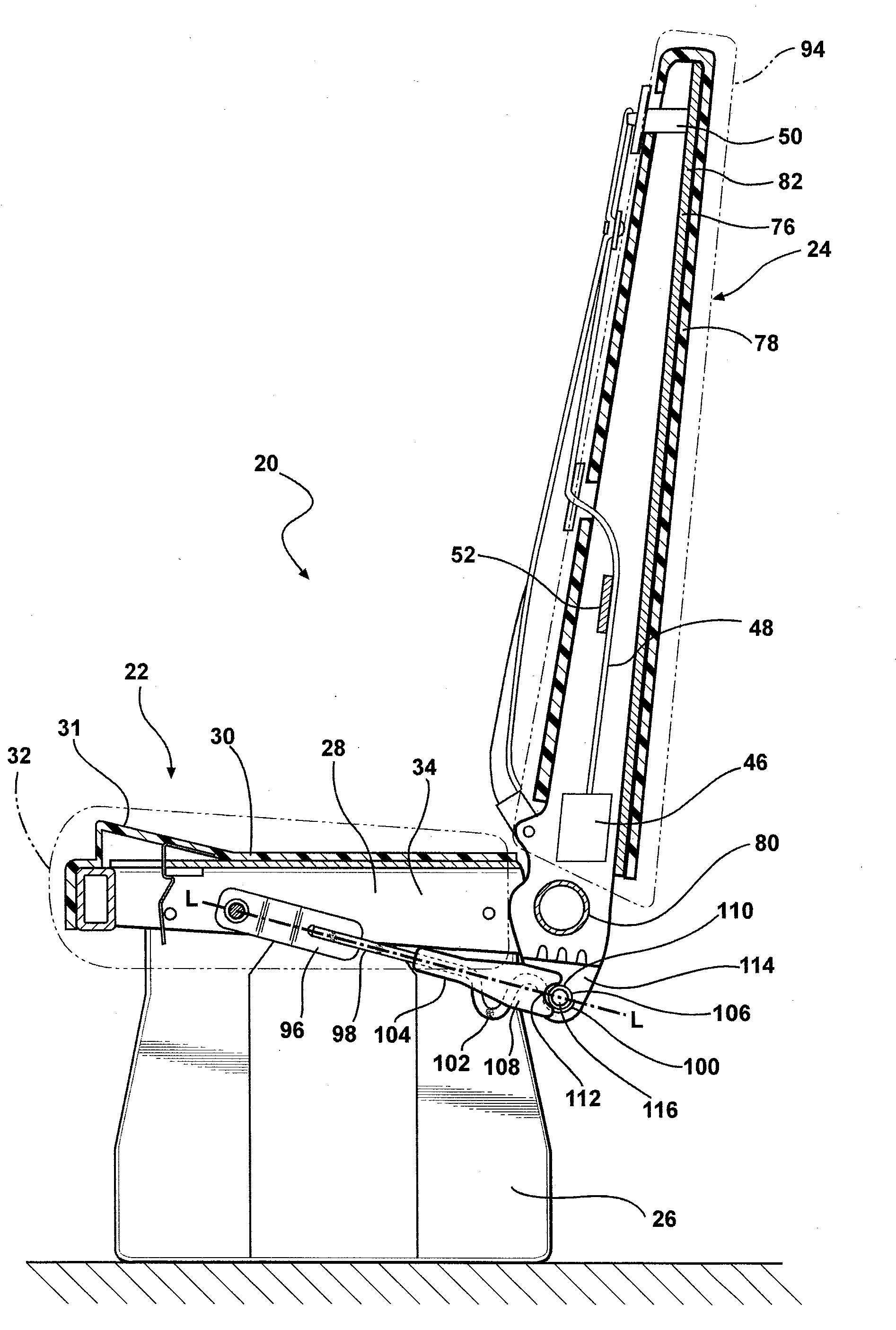Seat assembly for a vehicle
a vehicle and seat technology, applied in the field of seats for vehicles, can solve the problems of unbelted occupants that are typically uncontrollable under their own momentum, lose the benefits of the compartmentalized seating required by fmvss 222 for school buses, and the back cannot be controlled. , to achieve the effect of quick and easy assembly and preventing rotation
- Summary
- Abstract
- Description
- Claims
- Application Information
AI Technical Summary
Benefits of technology
Problems solved by technology
Method used
Image
Examples
Embodiment Construction
[0034]Referring to the Figures, wherein like numerals indicate corresponding parts throughout the several views, a seat assembly 20 is generally shown at 20. As shown in FIG. 1, the seat assembly 20 is typically disposed in a vehicle such as, for example, a standard school bus. Accordingly, as is known in the art, several seat assemblies 20 can be incorporated into the school bus in rows. It should be appreciated that the seat assembly 20 may be used in any type of vehicle including, for example, an automobile, an airplane, or a boat.
[0035]With reference to FIG. 2, the seat assembly 20 includes a seat bottom 22 extending generally horizontally and a seat back 24 extending generally vertically from the seat bottom 22. As described further below, the seat back 24 is pivotally coupled to the seat bottom 22. The seat assembly 20 typically includes mounting pedestals 26 attached to and extending downwardly from the seat bottom 22. The mounting pedestals 26 are typically mounted to a floo...
PUM
 Login to View More
Login to View More Abstract
Description
Claims
Application Information
 Login to View More
Login to View More - R&D
- Intellectual Property
- Life Sciences
- Materials
- Tech Scout
- Unparalleled Data Quality
- Higher Quality Content
- 60% Fewer Hallucinations
Browse by: Latest US Patents, China's latest patents, Technical Efficacy Thesaurus, Application Domain, Technology Topic, Popular Technical Reports.
© 2025 PatSnap. All rights reserved.Legal|Privacy policy|Modern Slavery Act Transparency Statement|Sitemap|About US| Contact US: help@patsnap.com



